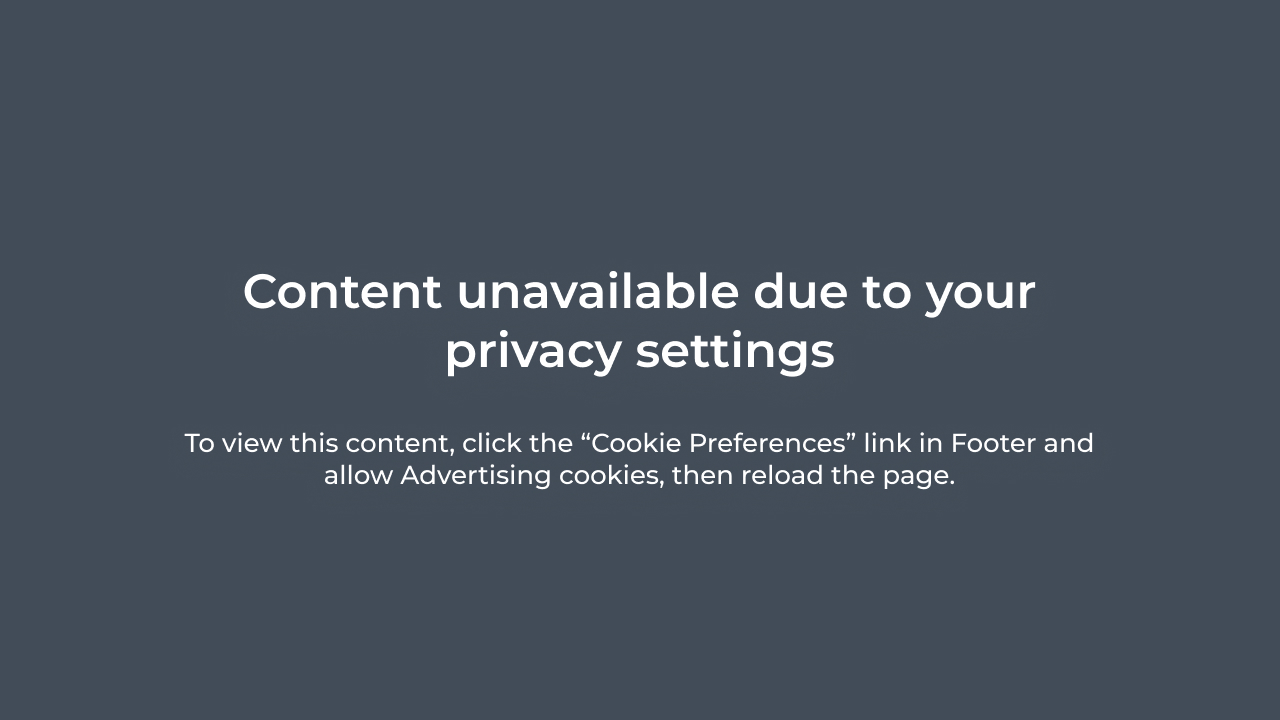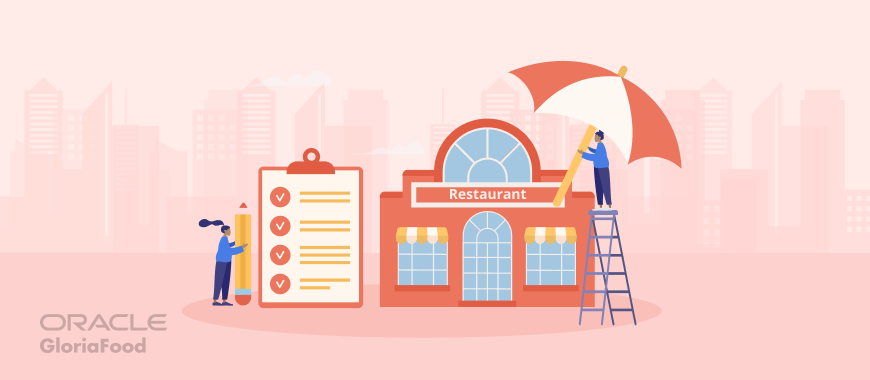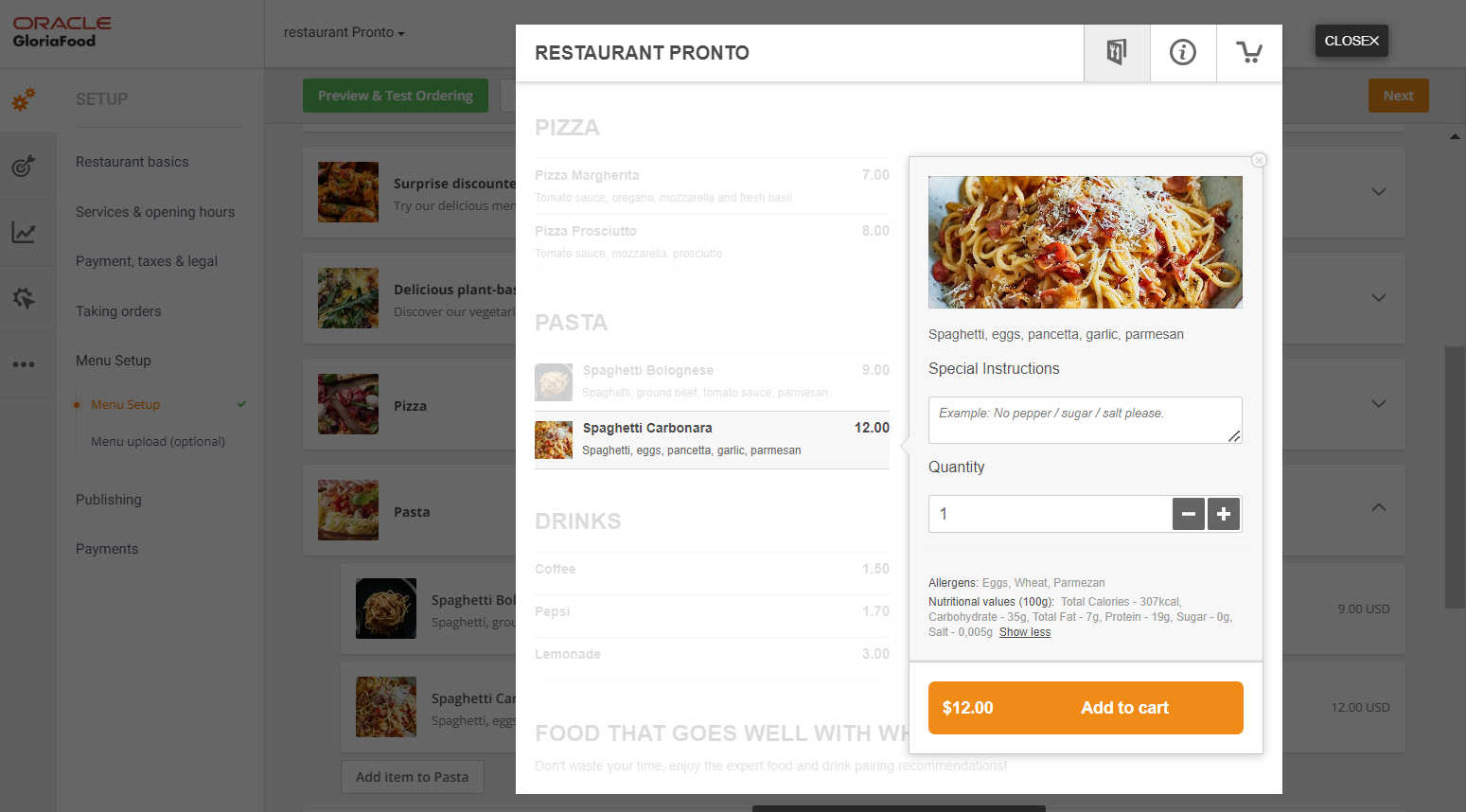- 1.Create a food safety protocol
- 2.Ensure your location and equipment is up to code
- 3.Offer an amazing online ordering experience
- 4.Add food allergens and nutritional information to your menu
- 5.Rely on technology for efficiency and safety
- 6.Train your employees regularly
- 7.Make maintenance a priority, online and offline
Opening a restaurant can come with numerous satisfactions such as happy customers that thank you for the delicious food, satisfied employees that appreciate their working conditions and a hefty profit that keeps your business successful for years to come.
But it can also come with a lot of risks related to food safety, employee injuries, reputation of the business, financial risks and much more.
That’s why you need to create a restaurant risk management plan to prepare and create the tools necessary to overcome any future unpleasant situations. We’ll help you out with these easy-to follow-tips:
Why you must have a restaurant risk management plan
Doing a restaurant risk assessment and creating a management plan can seem like an extra task when you are a busy restaurant owner, but the benefits are worth the time you invest:
- More efficient and consistent operations: in the process of preparing your business to avoid accidents, you make your operations more efficient. For example, you have a strict stocking policy to avoid food spoilage that leads to better use of each ingredient;
- Identify and mitigate potential risks: don’t sit back and wait for problems to arise. Instead, identify all possible risks and find possible solutions to prevent problems. For example, if you know there is a busy period coming, order more ingredients and schedule more employees;
- Protect your reputation: by implementing risk management in a restaurant business, you ensure you are still a trusted restaurant in your community. A food poisoning incident can instantly ruin your business and deter people from visiting you;
- Boost customer satisfaction: by doing restaurant risk management, you identify areas where you can improve so you can offer clients a better experience. For example, you can add allergen to your menu to cater to people who suffer from allergies.
Read more: 6 Restaurant Reputation Management Strategies for Up & Coming Restaurants
7 Tips for Restaurant Risk Management
What is risk management in a restaurant? It is the process of identifying all possible bad scenarios (food allergies, fires, slip and fall accidents, etc.) and taking steps to both prevent them and create instructions for handling the worst-case scenarios.
Read more: Why Do Restaurants Fail and How to Save a Failing Restaurant
Follow this risk management plan example for a restaurant:
1. Create a food safety protocol
Being that the main function of a restaurant is food, the biggest risk in the food industry is related to food safety, be it someone getting sick from your food, having too much food waste, prepared food getting spoiled from being improperly stored, etc.
Here are some tips that will help you create a restaurant risk management plan related to food safety:
- Have a strict cleaning schedule for surfaces, storage and equipment to prevent contamination;
- Label every ingredient with the delivery date and how long it can be kept in storage. Every week, take a look at your stock and throw out any expired item;
- Treat everyday like a health inspection day to insure you respect all food safety regulations.
Furthermore, you should also have in plan in place if anything bad happens and make every employee aware of it:
- What is the appropriate first response;
- Who employees should report to in an unhappy situation;
- How to handle clients in a bad scenario.
Read more: How to Ensure Restaurant Food Safety & Why It Matters
2. Ensure your location and equipment is up to code
Taking the steps to ensure your location and equipment is up to code will not only help you get all the state permits necessary for operating, but it will also create a safe space for both employees and clients.
Here are a few pointers for restaurant risk management:
- Make your floors slips-proof: very sharp knives and slippery floors are just an accident waiting to happen. Give them a new coating that prevents slipping and instruct employees to mop them immediately after something drops;
- Refrigeration units must have locks on the inside as well so there is no risk of someone getting stuck inside;
- Use cleaning products that are safe for food on surfaces that come into contact with it;
- Heating units should be checked constantly so they are in a perfect state of functioning and don’t cause accidents.
3. Offer an amazing online ordering experience
If you offer online ordering, and we highly recommend you do if you want to increase your sales, you must get the best technology if you want to prevent order mishaps that lead to unhappy customers and bad restaurant reviews.
Just like the popular saying, it is easier to prevent than treat the problem. Therefore, you need the best online ordering system from GloriaFood to streamline your online ordering process and keep your clients happy.

Every customer will appreciate how easy it is to place an order with just a few clicks on your website and you will be happy to know you can manage all orders from the order-taking app. Furthermore, once you sign up you also get access to useful features that help you promote your restaurant.
Read more: How to Promote Your Food Delivery Business as a Restaurant Owner
On top of this, you can also contact the responsive support team with any question or problem that may arise.
4. Add food allergens and nutritional information to your menu
Many people suffer from food allergies, but still like to go out to eat or order in from new restaurants. Why shouldn’t yours be their next choice? It can if you update your menu with allergen and dietary information.
If you don’t have information about possible allergens in your menu you open your business for lawsuits or risk people having an adverse reaction in your restaurant.
Good news, if you use our online ordering system, you get access to an intuitive menu builder where you can easily add information about nutritional values, allergens and you can also mark items as “Hot, Vegan, Vegetarian, Gluten-free, Halal, Nut-free, Dairy-free or Raw”.

You can do it in just a few clicks and the info will be visible just under the menu items when people browse your restaurant’s menu.
5. Rely on technology for efficiency and safety
There is always a big financial risk in the restaurant business. You invest a lot of money in opening your restaurant with the hopes of one day getting it all back and much more.
To achieve the dream of a long-lasting profitable restaurant it is not enough to serve great food and attract a lot of customers, you must also find new ways to improve efficiency and safety, such as relying on technology.
Check out these useful tips for restaurant risk management:
- Add security cameras with a security company on call to prevent theft and have proof in case something happens in the restaurant or kitchen;
- Use keyless entry systems to lock high-risk areas and enable staff to move through the property without touching dirty surfaces;
- Offer a secure Wi-Fi network that will only stock client data if they agree to it;
- To prevent cybersecurity vulnerabilities, use anti-virus software for every piece of software you use in or related to your restaurant;
- Add a POS-system to ensure all your information is secure;
- Use an online ordering system that offers clients a safe way to pay online.
- Fix website safety issues such as SSL certificate errors. Regularly update and maintain your website’s security features to create a safe and trustworthy online environment for your customers.
Read more: How using innovative restaurant technology can streamline your operations
6. Train your employees regularly
Your employees are the backbone of your business, so if you want to own a successful restaurant, you must keep them safe, productive, and happy with their working conditions.
A great way to do so is to offer them trainings that give them the knowledge they need to both do their work in a safe way and also provide clients with the best customer experience that will persuade them to come back time and time again.
These are some training ideas you should include in your restaurant risk management plan:
- Work safety trainings that focus on how to carry heavy items, how to handle sharp objects, how to use protective equipment, etc. A great added bonus is to offer them health insurance so your employees know they are protected in case something happens;
- Safety and hygiene procedures regarding food teaching them how to store, preserve and handle food;
- What to do in emergency situations such as a fire, blizzard or robbery;
- Customer service offering them tips on how to best fulfill clients’ needs and how to handle customer complaints.
Read more: Restaurant Staff Training 101: How to Improve Efficiency with Practical Training Methods
7. Make maintenance a priority, online and offline
Setting up a restaurant risk management plan is great, but it means nothing if you don’t maintain it. Refrigerators can break, employees change and are not trained, menu items cand change, all of it leaving room for problems.
Make a schedule to maintain and check all the items that could lead to an unpleasant event regularly.
Furthermore, when you open a food business you will need a couple of licenses and permits. But these can also expire, so make sure you renew the following in time so you can remain operating:
- Business license;
- Liquor license;
- Food server license.
Final Words
If you want to own a successful business in the food industry you need to create a restaurant risk management plan now. Ensure everything works smoothly from the kitchen to your employees and the technology to be prepared for any unpleasant event.
You might also like:

